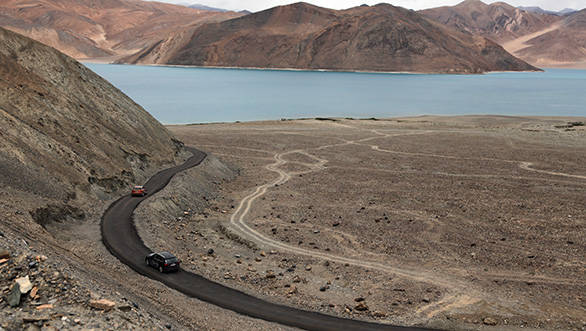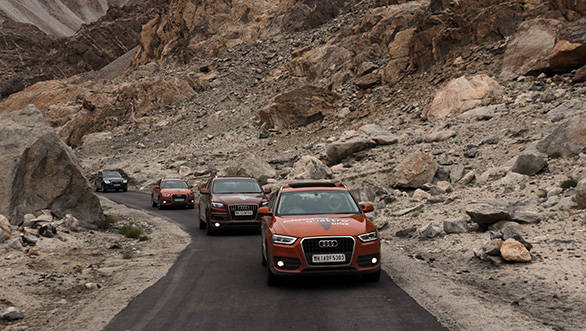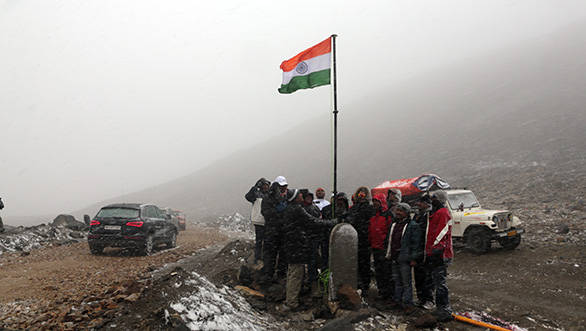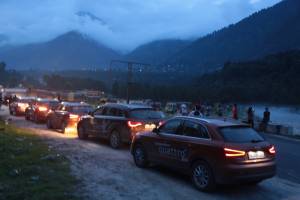From Pangong Tso to Marsimik La, driving to the world's highest motorable pass
About 20km North-East of Pangong Tso lies Marsimik La, but you might want to ask yourself why you want to get there in the first place. There are a number of very good reasons, like wanting to conquer the highest motorable pass in the world or actually heading even further towards the hot springs beyond, or maybe you just want to see the six-lane highway China has built all the way up to the border just 10 kilometres beyond the pass.
 Just before the start of Pangong Tso, a road turns north away from the lake and heads into the hills
Just before the start of Pangong Tso, a road turns north away from the lake and heads into the hills
When you are done finding a reason, take some more time and question your motives once again, and again, till you're sure that you are ready. The next step is getting permission from the Deputy Commissioner's office in Leh to climb the pass. The procedure is quite simple and all you have to do is fill out an Inner Line Permit and pay the nominal fee. Keep a set of copies of the form that are to be submitted at the ITBP check post at Phobrang and you're all set to go.
 The mettle road soon turns to dust and then to rubble and this is where you need to be really careful
The mettle road soon turns to dust and then to rubble and this is where you need to be really careful
Just before the start of Pangong Tso, a road turns north away from the lake and heads into the hills. The first settlement you hit is Lukung and then Tablang before climing over a hill and coming down into the small valley of Phobrang. Here you will need to deposit copies of the Inner Line permit before beginning the final climb.
After the checkpost, the road forks and the left fork heading North again will take you to Marsimik La. The climb is quite spectacular both in the vistas that unravel before you and the steep ascent of some 4,800 feet in just 10 kilometres. The mettle road soon turns to dust and then to rubble and this is where you need to be really careful. The loose rocks and stones may look harmless but they are razor sharp and will easily tear a tyre's sidewall. And trust us on this one in two trips here in the last two years, we've seen over 20 punctures and five tyres had to be scrapped with sidewall punctures.
Keeping your speeds as low as possible here is the key to making it to the top. Further up and just nearing the top of the pass, the roads are even worse as the loose sharp stones give way to larger rocks that will make the ride a nightmare on a two-wheeler. Even with a four-wheeler, you now need to take it really easy with the underside of your vehicle. The rocks are large enough to severely damage your undercarriage and the worst possible scenario would be a busted sump at 17,000ft. Choose the trail that offers the least resistance while remaining calm behind the wheel. The feeling of elation and achievement when you reach the top will more than make up for the rough and rocky roads.
 The feeling of elation and achievement when you reach the top will more than make up for the rough and rocky roads
The feeling of elation and achievement when you reach the top will more than make up for the rough and rocky roads
After celebrating at the top (not for too long) make sure you leave enough time to make the journey back down in daylight while exercising the same careful approach you took on the way up.














